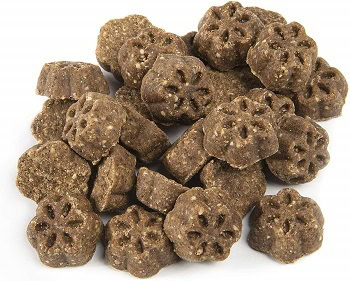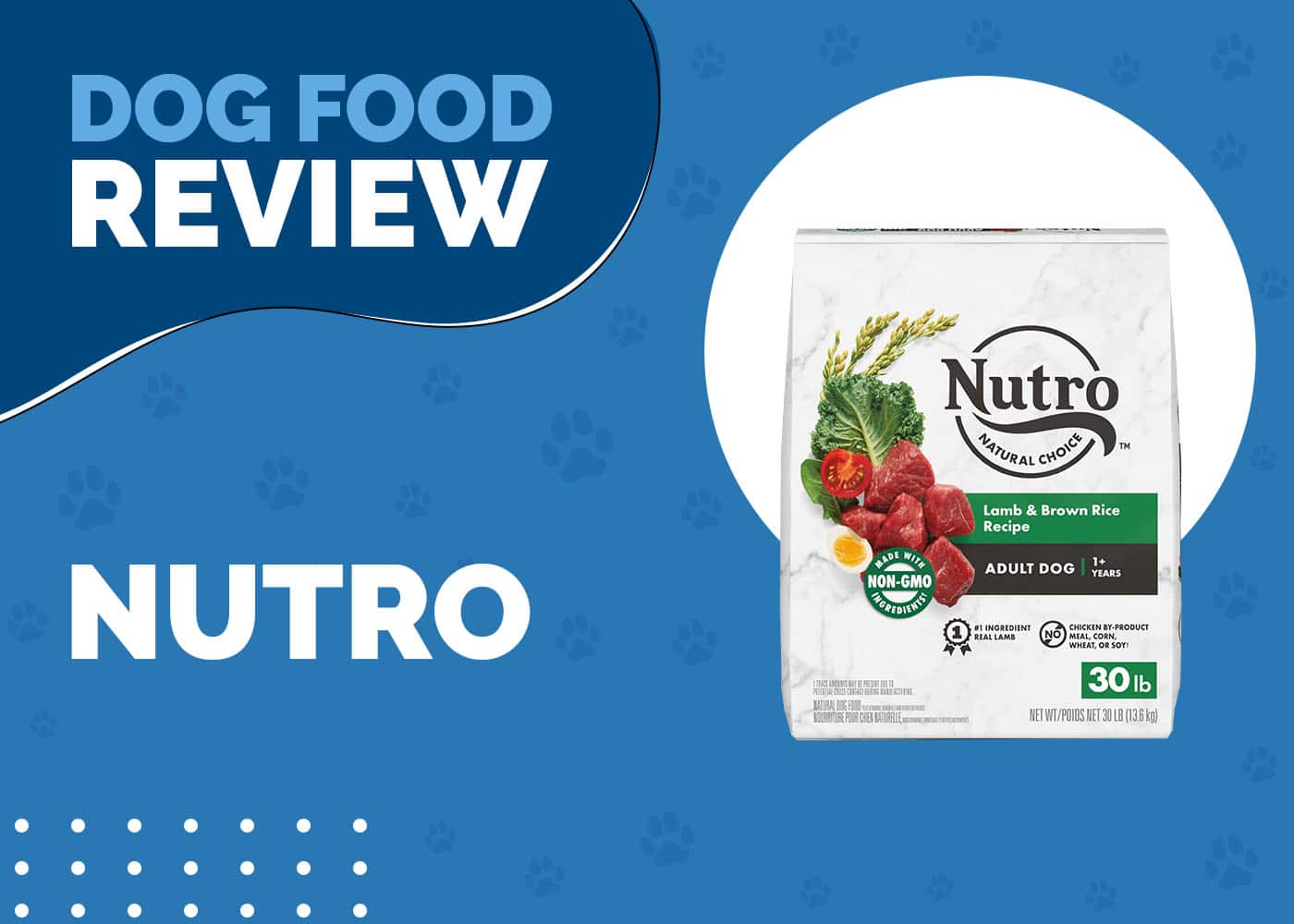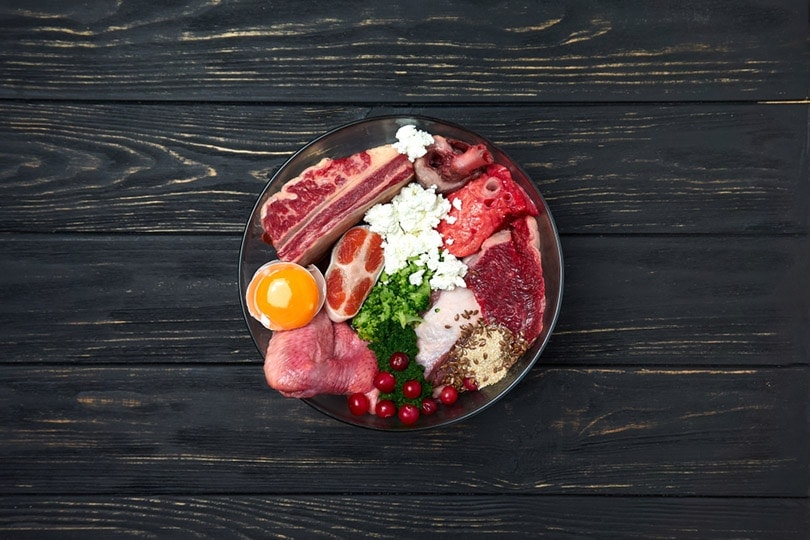Can Dogs Eat Chicken? Vet-Reviewed Nutrition Facts & FAQ

Updated on

Dogs are one of our favorite four-legged companions. They need a balanced diet of protein, fat, and carbs, along with micronutrients to live a healthy lifestyle.
Chicken is safe for most dogs to eat. Many companies use chicken as one of the main ingredients in their mixes, specifically for this reason. However, dogs suffering from food allergies to chicken, which will consequently lead to various skin or gastrointestinal signs, should stay away from this protein.
There are both pros and cons to be aware of when deciding to include chicken products, or just plain chicken, into your dog’s diet. For any changes to your dog’s dietary plan, it’s best to consult a veterinarian who can take into account your dog’s age, lifestyle, activity levels, health, and any other relevant factors.
Health Benefits of Chicken for Dogs
Chicken is a good source of protein. It supplies our dogs with amino acids and energy on which they can rely, but it goes without saying that dogs suffering from food allergies to chicken protein should not be offered any chicken at all.
Chicken also contains essential fatty acids, mainly omega-6 and, to a smaller degree, omega-3 fatty acids. These have many important functions in the body, such as encouraging healthy skin and coat, neurological development, and supporting cardiovascular and joint health, but an excess can lead to adverse effects.1 In the medical world, there is an ongoing debate about how safe omega-6 acids actually are and whether they could cause inflammation instead of protect against it, but there is lots of conflicting advice and no agreed consensus on their use or the recommended amount in the diet.2 The Association of American Feed Control Officials (AAFCO) suggests a safe upper limit of omega-6 to omega-3 of 30:1 in dog food, but this advice may change when new research becomes available.3
Chicken meat contains essential amino acids, along with glucosamine, chondroitin sulfate, and collagen, that are present in the cartilage. Further research is required on the benefits and application of these compounds for the complementary management of arthritis in our canine companions.
Some dogs can be finicky eaters. Adding chicken to their daily meal may help to encourage them to eat and maintain a healthy weight. Chicken is also considered a good bland food source for dogs that are suffering from an upset stomach, as it contains a single protein source and a simple carbohydrate, allowing the intestinal tract to heal while still providing essential easily digestible nutrients. Consult with your vet if your dog is suffering with a stomach upset and if they would benefit from eating some cooked chicken.
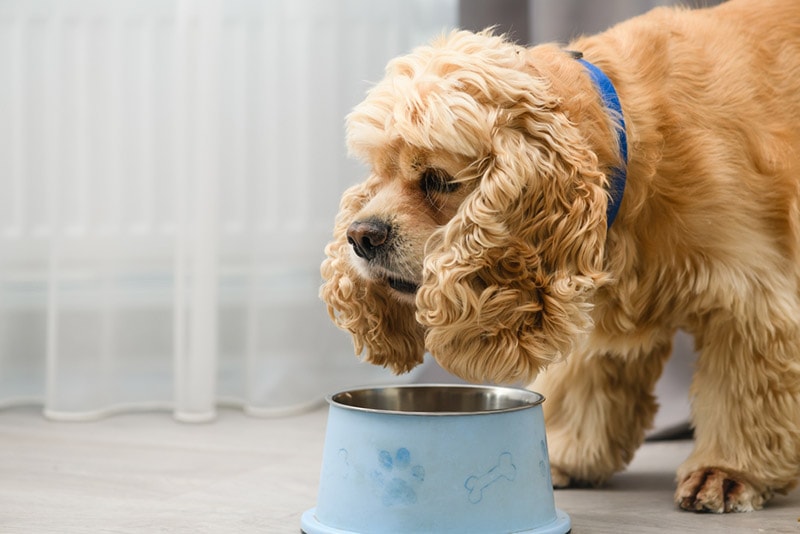
Health Hazards
Raw Chicken
Some dog owners are big raw food enthusiasts. There is nothing wrong with this. However, they do have to practice extreme caution, particularly if wanting to use chicken as part of a raw food diet, and consult with their vet about the pros and cons of feeding raw. Having all the necessary info and being aware of certain risks will enable every dog owner to make an informed decision with their dog’s best interest in mind.
The American Veterinary Medical Association recommends against feeding dogs raw meat, especially chicken meat, as rates of contamination with Salmonella spp range from 21% to 44% in samples purchased from retail locations throughout North America. These rates are lower for beef and pork intended for human consumption, ranging from 3.5% to 4%. Raw meats, even if intended for consumption by humans, are often contaminated with many other bacteria and parasites, such as Escherichia coli, Clostridium spp, Campylobacter spp, Listeria spp., Toxoplasma gondii, and tapeworm cysts. All of these may lead to food poisoning and serious illness.
Other issues with raw diets may include an imbalance in the amount of calcium and phosphorus, vitamins D, E, and A, or serum thyroxine levels, especially when feeding raw internal organs. This is why it’s so important to do your research independently and critically using science-based evidence, rather than relying on anecdotal personal experience from other dog owners. It’s imperative to consult with your vet and canine nutritionist to make sure you offer your dog the best and safest diet possible and keep yourself healthy in the process. Handling raw meat may also put your health and the health of your family at risk.
Preparation Methods
If you want to prepare the chicken for your dog yourself, make sure it is plain and unseasoned, as well as fully and thoroughly cooked to an internal temperature of 165 degrees Fahrenheit. Particularly avoid onion and garlic, since these are toxic to dogs. Try to also avoid frying or cooking it in any butter or oil. These products don’t often sit well in a dog’s stomach due to their fat content and can cause a stomach upset, and possibly even pancreatitis in some dogs, although this link remains under scrutiny. The amount of fat in food that can lead to pancreatitis remains unknown.
Consult with your vet about the best ways to prepare chicken for your dog. Making it yourself can be a cheaper alternative and just as safe when you take the right steps for a happy, healthy puppy. You can also keep some of the plain broth left from cooking and use it on your dog’s food, as it’s tasty and nutritious as well. But make sure you have not put any additives, salt, or spices in it.
Chicken Bones
Another important consideration is chicken bones. They should be avoided, both raw and cooked, as they pose a lot of health hazards to dogs. Dogs are often greedy and will attempt to swallow a large piece of the bone. Chicken bones can be brittle and sharp, especially when cooked, causing damage to the mouth and throat. They can also cause choking or damage to the stomach and intestinal lining, often leading to a blockage or constipation. All of these conditions are very painful and can easily become life-threatening if not treated in time, not to mention expensive, as your dog may require surgery to remove the bones from their stomach or intestine.
Although some dogs may have eaten bones without experiencing health issues, this is not something we can safely recommend, as it’s just not worth the risk. Always make sure to consult with your vet first, supervise your dog during meals, and be aware of the serious risks that bones carry for your pooch.
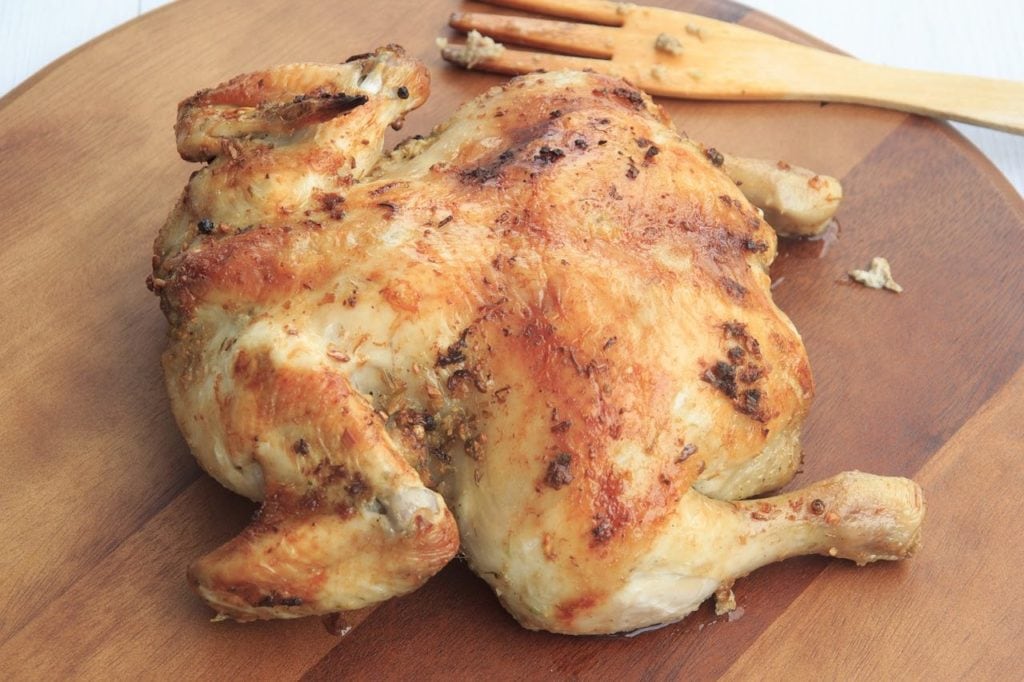
Other Considerations
Dogs can suffer from food allergies, which happen when a dog’s immune system reacts inappropriately and excessively to one or more of the proteins in their diet, causing skin and/or digestive issues. Allergies can start at any point in a dog’s life, but most often this occurs before they reach the age of one.
The most common signs of allergies in dogs include:
- Itchy skin and paws
- Excessive licking
- Rash
- Red and inflamed skin
- Hot spots
- Saliva staining on the fur
- Frequent ear inflammation and infection
- Digestive upset with vomiting or diarrhea
- Flatulence
Chicken is the third most prevalent food allergen source in dogs. Pay attention to how your pup handles any change in their diet, and always make gradual transitions over 7–10 days, slowly introducing any new ingredients. If they begin to eat less or exhibit health issues, such as stomach upset or signs of skin irritation, stop the change and consult your veterinarian to verify the cause.
These are the most common allergens in dogs:
- Beef
- Dairy
- Chicken
- Wheat
- Lamb
- Soy
- Egg
- Pork
- Fish
- Rice
On the other hand, for dogs that do not suffer from food allergies, a combination of chicken and rice is often an excellent alternative to dry dog food for those who have an upset stomach. It is best to use breast meat from the chicken with a limited amount of fat and the skin removed.
Should My Dog Only Eat Chicken?
Some picky dogs might try and finagle their way into eating a diet made entirely of chicken. They push their food around in the bowl until the meat is gone and everything else remains.
However, this is not a permanent solution for a picky eater. It may take work, but there are methods to help guide their eating habits.
The reason that they can’t eat an exclusive diet of only chicken, without other protein, fat, and carbohydrate sources is the same reason that we can’t eat only one kind of food as humans. Dogs are considered facultative carnivores, and they need specific amounts of micronutrients, such as vitamins A, B, E, and D, as well as minerals, antioxidants, and many more compounds. They must have these for their internal body processes to function correctly. Any deficiencies or excess in these nutrients place your pup at risk for an array of nutrition-related diseases.
The AAFCO provides guidelines on the exact amounts of nutrients dogs need in their diet, based on their age and growing or maintenance needs. Complete and balanced dog food should clearly state all the ingredients in accordance with AAFCO.
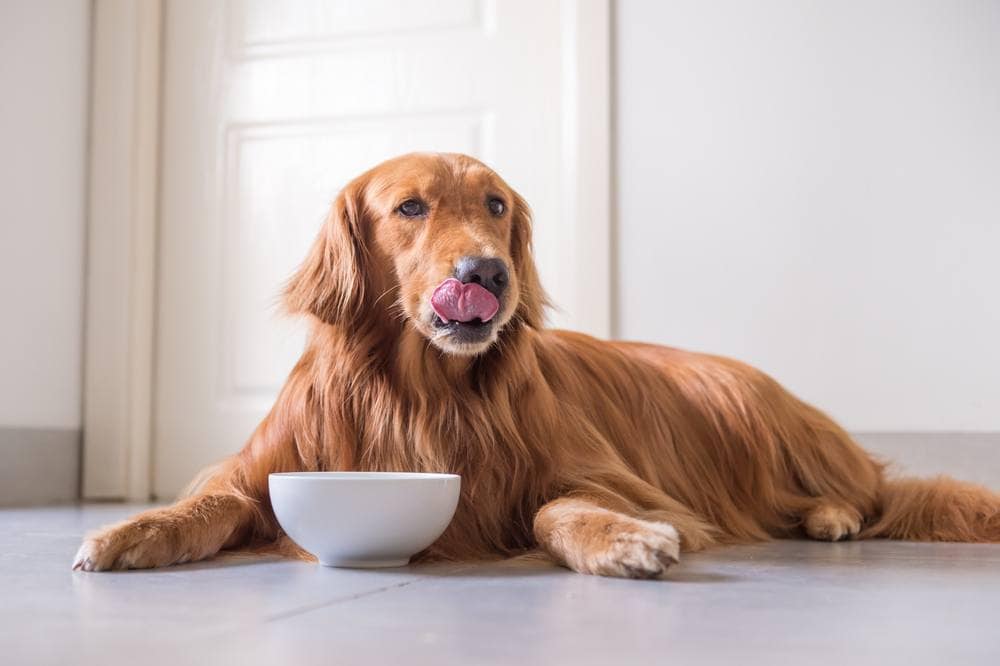
How Much Chicken Is Safe for My Dog to Eat?
If you decide to add chicken or any other poultry into your dog’s diet as a treat, it should make up no more than 10% of their total calorie consumption for each day, together with the other treats as well. Otherwise, you may end up giving your dog too much food and risk obesity. The World Small Animal Veterinary Association, or WSAVA, has put out a chart that gives a guideline for daily calorie consumption based on your pup’s ideal weight.
When it comes to calculating the amount of chicken being offered only as a treat, this will depend on your dog’s weight. A rough idea of this amount may be calculated using the above charts. If the dog weighs 44 pounds, about the average weight for a medium-sized dog, they will need to take in about 790–993 calories each day. Chicken as a treat should only make up 10% of that total, coming to 79–99 total calories. One gram of cooked chicken meat may contain around 1.6 calories based on USDA analysis. In standard measurements, that means it is appropriate to give them about 50–60 grams of chicken per day, but without any other treats. You may also decide to feed your dog a diet based on chicken as the main source of protein, but only if your dog does not have an allergy to chicken.
Consult with your vet about the adequate amount of chicken your dog needs. For example, PetMD gives out some recommendations on the amounts appropriate based on a dog’s weight, using a cup as a unit of measure, but there may be many different cup sizes and shapes. When prepared properly, chicken is considered a very safe and nutritious food choice for most dogs, as long as they are not suffering from chicken allergy.
Remember that the exact amount of food depends on the ideal weight of your dog, not their actual weight. Feeding dogs the appropriate amount of lean chicken meat as a treat can help bring them up to a healthy weight or reduce their weight if they are on a diet.
Final Thoughts
Whether you want to train them with poultry treats or are researching the best ways to go about a chicken-based diet, speak to your vet for first-hand professional advice. Chicken can be a valuable source of protein for your pooch and is safe for most dogs to eat.
See Also:
- Can Dogs Eat Chicken Gizzards? Vet Reviewed Nutrition Facts
- Can Dogs Eat Fried Chicken? Vet Approved Facts & FAQ
Featured Image: Jaromir Chalabala, Shutterstock




